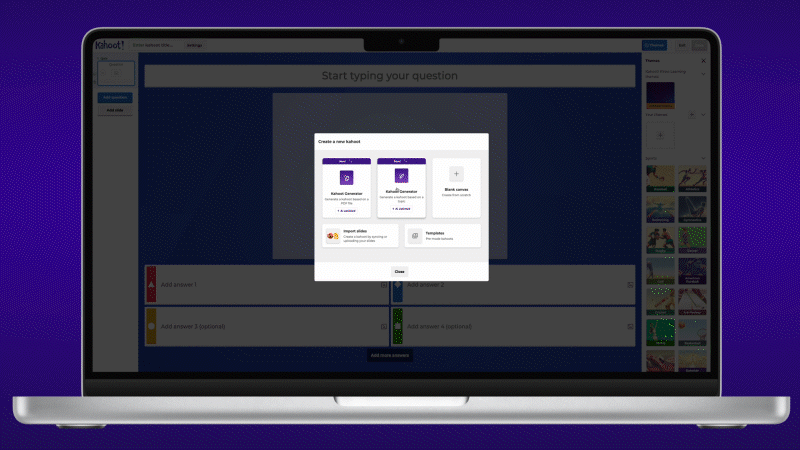Today, we’re excited to introduce a groundbreaking new feature that enables Kahoot!’s users to create engaging learning experiences directly from Wikipedia—powered by generative AI. With content sourced from local Wikipedia articles, our users around the world can now create kahoots in any of the 19 languages currently supported by Kahoot! in seconds.
This marks an exciting first for Kahoot!, as we leverage AI to unlock unlimited value from a single-source content provider—transforming the way knowledge is created, shared, and experienced.

A trusted source of knowledge
Kahoot!’s users, both at school and at work, are already able to generate tailored learning content in seconds on either a selected topic, a URL or a PDF, with the help of generative AI. Now, with this new, innovative feature, they can also transform Wikipedia articles seamlessly into interactive kahoots, such as quizzes, polls, and other learning experiences, while ensuring the original source is cited. Each kahoot will clearly reference the Wikipedia article it is based on, promoting transparency and giving credit to the content’s origin. This empowers our users to create personalized, high-quality educational material with confidence, knowing exactly where the information comes from.
Millions of kahoots enhanced with AI
With the launch of our AI question generator last year we made content creation even faster, easier, and more impactful. Now, nearly 5 million kahoots have been created and enhanced with AI assistance on Kahoot!, and I am really excited to see how this new feature will spark creativity and knowledge sharing in classrooms and beyond.
Generate your own kahoot based on a topic of your choice with the Wikipedia AI generator today or check out the ready-to-play kahoots from Wikipedia!
Access our AI generator tools in Kahoot!+ Gold and Kahoot! EDU for teachers, Kahoot!+ Gold and Kahoot! EDU for higher educators, Kahoot!+ Gold for personal users and students, and on Kahoot! 360 Pro for business users.




